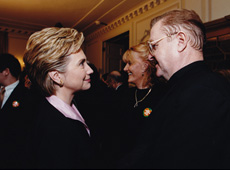New political reality has emerged since Stormont closed its doors
Posted By: January 09, 2019
IRISH CONGRESSIONAL BRIEFING
Two years on from Martin McGuinness’s resignation it is apparent that RHI was the catalyst rather than the cause of the institutions’ collapse. Thanks to Sir Patrick Coghlin’s inquiry we have learned the degree to which Arlene Foster and her special adviser Andrew Crawford were key players in Stormont’s biggest ever scandal. However, while Sinn Féin was unaware of the level of ministerial disengagement in the development and roll out of the scheme, alongside its apparent manipulation and exploitation, months before the late deputy first minister tendered his resignation, the financial magnitude of the RHI’s mismanagement was public knowledge, courtesy of a July 2016 audit office report.
If one single thing precipitated Stormont’s demise, it was that trust and respect had been exhausted. Almost a decade of power-sharing, punctuated by several rounds of negotiations and regular crises had drained every drop of goodwill. Martin McGuinness had been at the fore in efforts to reconcile Nationalism and Unionism, yet there were still those within the DUP’s ranks who continued to blank [acknowledge] him. Peter Robinson kept his MLAs’ disdain in check, but his successor was unable to exercise the same degree of control and appeared reluctant to allow herself to get too close to the former IRA commander.
The term preceding Stormont’s collapse, its first with an official opposition, proved uncomfortable for the DUP and Sinn Féin and despite the best efforts to present a united front, the big two’s political aspirations rarely, if ever, coalesced. Issues like the past, same-sex marriage, women’s rights, and the Irish language continued to cause friction, and usually, the only thing the two parties could agree on was to defer difficult decisions.
And then there was Brexit.
Much is made of the joint letter to the British government signed in summer 2016 by the First and Deputy First Minister, and while it contrasts greatly with the uncompromising tone of today’s DUP, the correspondence was largely superficial – more a heads of agreement than a clear road map.
In the political turbulence created by the outcry around RHI, coupled with Martin McGuinness’s deteriorating health, Republicans saw an opportunity to pull the plug on Stormont without causing backlash and recrimination in their own community.
Subsequently, Stormont’s collapse led to higher expectations of any new power-sharing arrangements, an attitude that prevails today among Republicans and to a degree among Nationalist and the other non-Unionist parties.
Even if the entire population of Fermanagh followed the well-meaning, if a rather naive Dylan Quinn on his protest walk to Stormont, it wouldn’t make the appetite for a restored Assembly on the previous terms any greater, as such an arrangement would likely flounder in the short term.
In the period the institutions have been dormant, we have come a long way politically. Unionism has lost his its majority in the Assembly and Brexit has fueled a new dynamism in the desire for a united Ireland.
Any institutions that emerge from fresh negotiations in the future must reflect the North’s new political reality.










